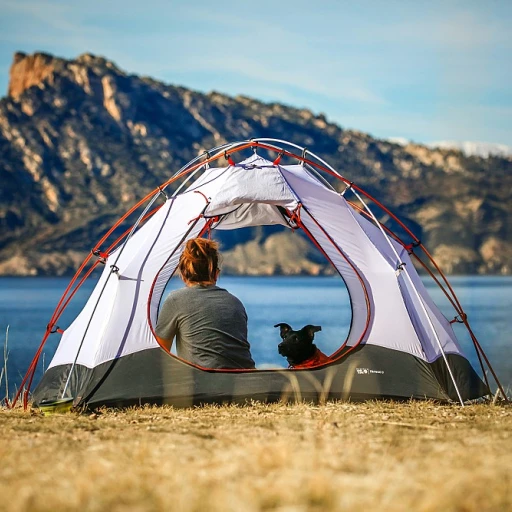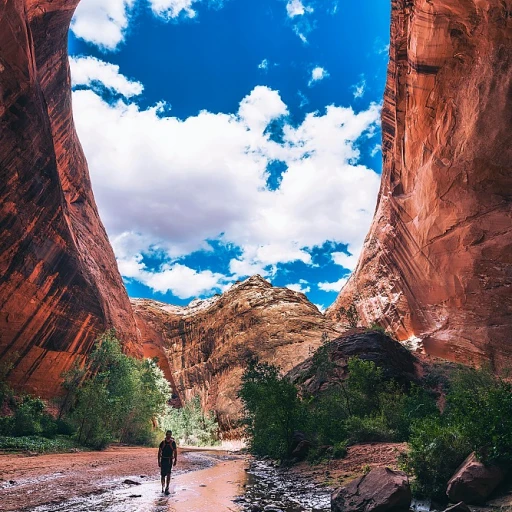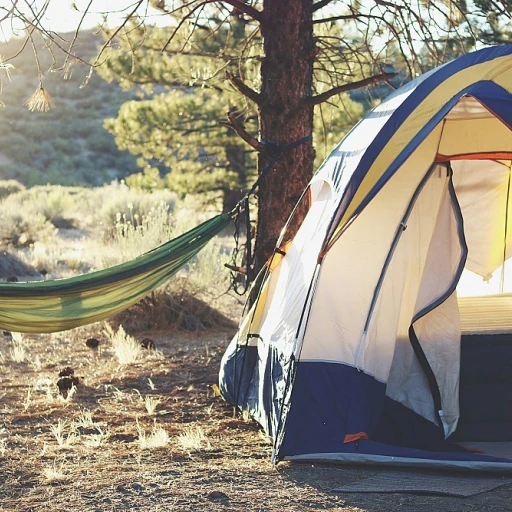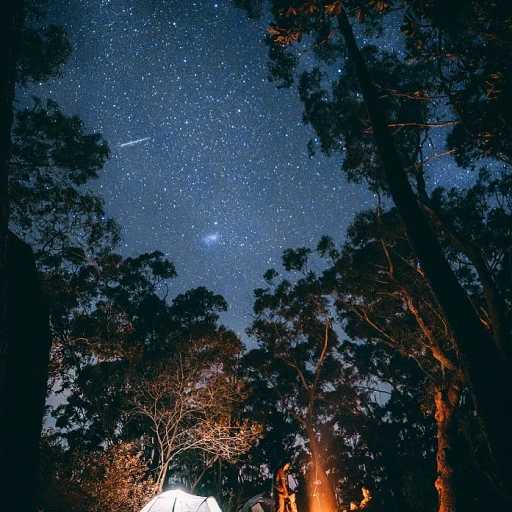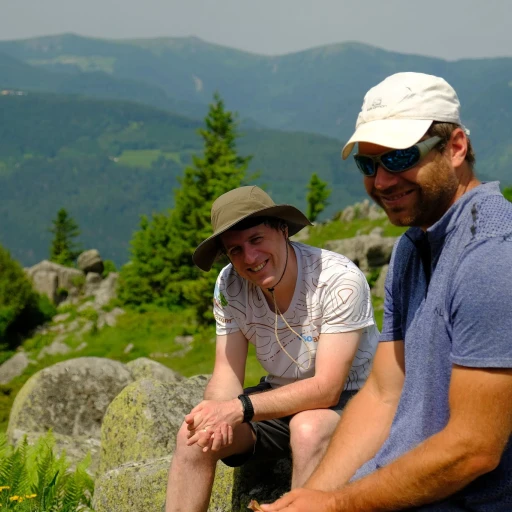
Discovering lake crescent: an overview
What makes lake crescent special
Lake crescent, located in the heart of the Olympic National Park in Washington, is more than just a body of water. It's a geological marvel formed by glacial activity thousands of years ago. Its stunning clarity, with visibility reaching up to 65 feet deep, captivates visitors instantly. Nestled on the northern edge of the Olympic Peninsula, lake crescent is flanked by lush forests and rugged mountain ranges, making it a prime spot for nature enthusiasts and hikers alike.One of the most enchanting features of lake crescent is its unique turquoise-blue color, which is a result of a lack of nitrogen in the water, preventing algae growth. The lake's pristine waters are often compared to the mesmerizing hues seen in the Caribbean, offering a sharp contrast against the evergreen surroundings.
Stunning landscapes and varied trails
The Olympic National Park offers a plethora of trails that cater to different experience levels, from leisurely strolls to strenuous hikes. For many, the allure of lake crescent lies in its proximity to various hiking trails such as the Spruce Railroad Trail and the Marymere Falls Trail. These trails provide hikers with an opportunity to explore the lake's shoreline, old-growth forests, and scenic viewpoints.The Spruce Railroad Trail, running 11.2 miles along the northern shore, is steeped in history and offers one of the best ways to experience the beautiful lake. Alternatively, the Marymere Falls Trail is a shorter option at just 1.8 miles round trip, leading you to the stunning Marymere Falls with its 90-foot cascade through a lush forested area.
Engaging with the local culture and history
Lake crescent is also a place rich in history and cultural significance. The land around the lake was traditionally used by the Klallam people, and several archaeological sites have been found in the area. In more recent history, the lake has seen the establishment of landmarks like the Lake Crescent Lodge, which was built in 1915 and continues to serve as a charming retreat for visitors.The lodge itself is an excellent starting point for exploring the region, offering boat rentals and guided tours to help visitors immerse themselves in the natural beauty and historical context of lake crescent. Whether you're here to dive into the crystal-clear waters, hike through lush forests, or learn about the rich cultural heritage, lake crescent promises an unforgettable experience.
For those looking to further enrich their adventure, a visit to Ross Lake Resort can offer another layer of natural beauty and outdoor activities to enjoy. Discover more by checking out this guide to Ross Lake Resort: your ultimate gateway to nature and adventure.
Top hiking trails around lake crescent
Marymere falls trail
The Marymere Falls Trail is a must-see for anyone visiting Lake Crescent. This 1.8-mile round-trip hike is relatively easy, making it accessible for hikers of all skill levels. The trail takes you through lush old-growth forest before leading you to the stunning Marymere Falls, a 90-foot waterfall that cascades into a small pool. Don't forget to bring your camera; this spot is photo-worthy!
Mount storm king trail
If you're seeking a more challenging trek, the Mount Storm King Trail might be for you. This 4.1-mile round trip is steep and strenuous, but the payoff is worth it. The summit offers breathtaking views of Lake Crescent and the Olympic Mountains. The climb involves using ropes in certain sections, so make sure you're prepared for a bit of adventure. Be cautious, and always prioritize safety.
Spruce railroad trail
Another popular hike is the Spruce Railroad Trail. Stretching 4 miles one way, this trail follows the historic route of the Spruce Railroad, which operated during World War I. It's one of the most accessible paths, perfect for a family outing or a leisurely walk. Along the way, you'll pass by the magical Devil's Punchbowl, a deep blue swimming hole that's perfect for a refreshing dip on a warm day.
Sol duc falls trail
Further adding to the allure of hiking in the area, the Sol Duc Falls Trail is another top pick. This 1.6-mile round trip is moderately easy and leads you to one of the most picturesque waterfalls in Olympic National Park, Sol Duc Falls. The trail takes you through a rich forest ecosystem, offering plenty of opportunities to witness the local flora and fauna.
Olympic discovery trail
For those looking for a longer adventure, the Olympic Discovery Trail offers miles of hiking options. Spanning over 130 miles, this trail runs from Port Townsend to the Pacific Ocean, passing through the Lake Crescent area. It's a great way to explore the diverse landscapes of the Olympic Peninsula. Sections of the trail around Lake Crescent provide spectacular lake views and access to serene spots for picnics and rest.
If you're a hiking enthusiast looking to explore Lake Crescent and its surrounding trails, you might also enjoy exploring north cascades national park.
Accommodation options: lake crescent lodge and log cabin resort
Lake crescent lodge: the historic gem
Nestled along the serene shores of Lake Crescent, the historic Lake Crescent Lodge offers a perfect mix of rustic charm and modern comforts. Established in 1915, this lodge has been a favored retreat for travelers seeking tranquility in the Olympic Peninsula. Each room is equipped with cozy furnishings, and guests often rave about the stunning views of the lake and the surrounding Olympic Mountains.
One cannot overlook the lodge's deep-rooted history. Built during the era of grand national park lodges, Lake Crescent Lodge stands as a testament to the time when travel to remote and beautiful locations was becoming popular. According to the National Park Service, the lodge retains much of its original structure, giving visitors a genuine experience of early 20th-century vacationing in the Pacific Northwest.
The lodge isn't just about comfort and history; its location makes it ideal for hikers and nature enthusiasts. The Spruce Railroad Trail, an 8-mile round trip alongside the north shore of the lake, begins just a short distance from the lodge. With such easy access to trails, it's no wonder that hiking enthusiasts flock here. Many visitors also use the lodge as a base to explore nearby attractions like Marymere Falls and Sol Duc Hot Springs.
A notable trend among visitors is the increasing popularity of guided tours. These tours offer a wealth of information about the local flora and fauna, ensuring that guests have an enriching experience. "The guided hikes are fantastic," says John Anderson, a frequent visitor and outdoor enthusiast, "They really opened my eyes to the natural beauty and biodiversity of the area." Thus, those who are keen on learning more about the ecosystem of Lake Crescent and its surroundings would benefit greatly from these experiences.
Log cabin resort: rustic comfort
For those looking for a rustic and cozy experience, the Log Cabin Resort is an excellent choice. Situated on the north shore of Lake Crescent, this resort offers a variety of accommodation options, from basic cabins to more luxurious chalets. The resort has been a family favorite for generations and holds a special charm for those wanting to disconnect from the hustle and bustle of everyday life.
The Klaaam people, who have called the Olympic Peninsula home for centuries, once used this area for fishing and other activities. The Log Cabin Resort pays homage to this history, offering cultural programs that educate guests about the area's indigenous heritage. You can experience the natural surroundings in an authentic and respectful way, thus enhancing your connection to the land.
The resort is particularly popular among group travelers and families due to its varied amenities. Whether you're spending your day swimming, fishing, or simply lounging by the lake, there's something for everyone. Linda Morrison, a mother of three, shares, "Our family loves staying at the Log Cabin Resort. There are so many activities to keep the kids busy, and the staff is always helpful and friendly." This multi-faceted approach to hospitality ensures a comfortable and enjoyable stay for all.
One of the standout features is its proximity to the trailhead for the Devil's Punchbowl area along the Spruce Railroad Trail. This makes it a prime spot for those wanting quick access to outdoor adventure without straying far from their accommodation. Exploring the beautiful Lake Crescent on foot is now easier than ever, making this resort a hiker's dream.
Exploring the waters: kayaking, canoeing, and swimming
Kayaking near Crescent Lake Lodge
Nothing beats the feeling of paddling across the pristine waters of Lake Crescent, surrounded by the lush foliage of the Olympic National Park. One popular start point is near the Crescent Lake Lodge, known for its historical significance and majestic views. According to the National Park Service, kayaking is one of the most favored activities around Lake Crescent due to its clear waters and unique aquatic ecosystem.
Canoeing to Devil's Punchbowl
For a slightly more adventurous route, locals recommend canoeing to the Devil's Punchbowl. This stunning location offers breathtaking underwater visibility, making it a top spot for photogenic moments. Studies have indicated that this area is one of the clearest freshwater lakes globally, with visibility often exceeding 50 feet (about 15.2 meters).
Swimming: Refreshing Retreat in the Summer
Swimming in Lake Crescent during the summer months is an experience unlike any other. The water temperature remains cool, providing a refreshing escape from the heat. The shallow areas near the Log Cabin Resort are particularly popular among families and casual swimmers. A report by the Washington Department of Ecology confirmed that the water quality at Lake Crescent is exceptionally high, which is why it's so incredibly inviting for swimmers.
Guided Tours on the North Shore
If you're looking to gain some insights while exploring the waters, guided tours are available from several points around the lake, particularly on the North Shore. These tours often provide fascinating details about the local flora and fauna, as well as the geological history of the area. For instance, it’s not uncommon for tour guides to mention the lake's origins, formed by glaciers some 13,000 years ago.
Learning the Winds at Storm King Ranger Station
Before setting out on the water, it’s a good idea to check the wind conditions at the Storm King Ranger Station. The wind patterns can significantly affect your experience, especially when kayaking or canoeing. Ranger John Smith, an expert in local weather patterns, suggests early morning or late afternoon as the best times for smooth, enjoyable outings.
Wildlife and natural beauty of lake crescent
Spotting diverse wildlife
One of the highlights when visiting lake crescent in olympic national park is the chance to see some fascinating wildlife. The park itself harbors a rich array of animal species, mirroring the region's diverse ecosystems.
Here, you'll find the remarkable Roosevelt elk roaming freely, making the area their home. According to the National Park Service, these elk are unique to the Olympic Peninsula, with a population that's crucial to the local ecosystem. Don't forget to look up, as you might spot Bald Eagles soaring overhead, especially near the water's edge.
The shores of lake crescent also cater to avid bird watchers. Species like the common loon, the great blue heron, and various types of ducks can be seen gliding across the water or nesting near the shore. A fun fact comes from a research report published by the Audubon Society: the olympic national park is home to over 300 bird species. So, keep those binoculars handy!
Flora and fauna of the olympic peninsula
The plant life around lake crescent is equally impressive. From the majestic Western Hemlock to the delicate vine maple, the area bursts with greenery. According to a study by the USDA Forest Service, the olympic national park's rainforest supports an incredible mix of coniferous and deciduous trees.
Wildflowers like trillium and columbine add splashes of color to your hikes. Witnessing these natural beauties in bloom while trekking along the spruce railroad trail, for instance, is a treat for botany enthusiasts.
Marine life in crescent lake
The clear, blue waters of crescent lake are home to several unique marine species. Perhaps most notable is the Beardslee trout, a localized population found solely in this lake. This rare trout was named after Capt. Lyman K. Beardslee, who first cataloged the fish back in the 19th century.
Another endemic species is the crescenti Cutthroat trout. This unique fish species is a testament to the lake's isolated ecosystem, providing a rare opportunity for ichthyologists and fishing aficionados alike.
Protecting the natural heritage
Preserving the diverse wildlife and natural beauty of lake crescent and its surroundings is a priority for conservationists and park authorities. The National Park Service actively works to protect these ecosystems through various initiatives, including habitat restoration and wildlife monitoring.
Programs like the Water Quality Monitoring project help maintain the pristine condition of lake crescent, ensuring that future generations can continue to enjoy its beauty and biodiversity.
Day trips from lake crescent: sol duc hot springs and hurricane ridge
Unwind at sol duc hot springs resort
Just a short drive from lake crescent, sol duc hot springs resort is one of the most beloved day trip destinations. Nestled in the heart of olympic national park, this resort offers a natural retreat where you can recharge after a long hike. The mineral hot springs are reputed for their healing properties and offer visitors a unique way to relax and rejuvenate. You can soak in the mineral pools or take a dip in the larger outdoor pool, all while being surrounded by the lush beauty of the park.Hiking to hurricane ridge
If you're up for a bit more adventure, a day trip to hurricane ridge is a must. Known for its stunning views and diverse wildlife, hurricane ridge provides panoramic vistas of the pacific northwest. The ridge features various hiking trails that cater to different skill levels. In the summer, you’ll find fields of wildflowers, while winter transforms it into a snow-covered paradise ideal for snowshoeing and skiing.The journey to sol duc falls
Another fantastic day-trip option is to hike to sol duc falls. The hike usually starts from the sol duc hot springs area, making it a convenient addition to a day of soaking in the mineral springs. The trail to sol duc falls takes you through verdant old-growth forests, eventually leading to a breathtaking waterfall. It’s a moderately easy trek, suitable for families and casual hikers alike.Exploring the Olympic Discovery Trail
The olympic discovery trail is another gem you wouldn't want to miss during your time at lake crescent. This extensive trail stretches from port angeles to the shores of the pacific ocean, covering various terrains, including forested areas, coastal line, and urban landscapes. Whether you're on foot or bike, the trail provides a fantastic way to explore the diverse beauty of the olympic peninsula.Marymere Falls: A must-see
For a shorter, family-friendly excursion, consider heading to marymere falls. This scenic waterfall is easily accessible via a relatively short and well-maintained trail. The hike offers mesmerizing views of the surrounding old-growth forest and the waterfall itself. It's an excellent choice for those who want to experience the natural beauty of the area without committing to a strenuous hike.Historical significance of lake crescent
Native history and influence
Lake Crescent has a rich historical legacy, particularly relating to the Native American tribes who originally inhabited the Olympic Peninsula. The area around the lake was traditionally used by the Klallam tribe for fishing, hunting, and gathering. They revered the lake, naming it "Lake Nook" after a legend involving a battle between two rival tribes that created the lake. Artifacts and other evidence of their presence still exist, showcasing the deep-rooted history and culture of the region.
Early settlers and explorers
European settlers began arriving in the area in the late 19th century, looking for new opportunities in logging and mining. The lake quickly became a hub for these activities, and small communities developed around its shores. In the early 1900s, the Olympic Peninsula's scenic beauty attracted early explorers and tourists, leading to the establishment of accommodations and recreational facilities around Lake Crescent.
Development of lake crescent lodge
The Lake Crescent Lodge, now one of the most popular lodges in the park, has its roots in this era. Built in 1915, it originally served as a resort for vacationers looking to escape city life. The lodge has hosted numerous notable guests over the years and remains a central accommodation option for visitors to the area. For more about lodging options, check out our section on Lake Crescent Lodge and Log Cabin Resort.
National park designation
In 1938, the establishment of Olympic National Park brought more attention and protection to Lake Crescent. The National Park Service (NPS) has since maintained the area's natural beauty, ensuring sustainable tourism and protecting wildlife habitats. The park's expansion and conservation efforts have played a significant role in preserving Lake Crescent's pristine environment.
Impact of historical events on tourism
Throughout its history, various historical events have shaped the tourism landscape around Lake Crescent. During World War II, the lake and surrounding areas became less accessible due to fuel rationing and travel restrictions. However, post-war periods saw a surge in tourism, with families flocking to the lake for recreational activities.
Preservation efforts
In recent years, there has been a growing emphasis on preserving the natural and historical integrity of Lake Crescent. The NPS and local organizations have initiated programs to mitigate environmental impact, educate visitors about sustainable practices, and maintain historical landmarks. The constant balance between tourism and preservation continues to be a focal point for the community and park management.
Lake Crescent's rich historical tapestry, from Native American heritage to modern conservation efforts, ensures that it remains a beloved destination for history buffs and nature enthusiasts alike. To plan your hiking adventures around Lake Crescent, don't miss our insights on the Top Hiking Trails in Washington.
Planning your visit: tips and recommendations
Getting there and around
When planning your adventure to Lake Crescent, understanding how to get there is crucial. Lake Crescent is located in the Olympic National Park in Washington. The most common gateway to the park is via Port Angeles, which is about 18 miles east of the lake. To reach Lake Crescent from Seattle, you can take a scenic drive via US-101, which takes roughly 3 hours depending on traffic and weather conditions.
Best times to visit
Timing your visit to Lake Crescent can significantly affect your experience. The ideal period to visit is in the summer months, from June to September, when the weather is warm and the hiking trails are at their best. However, fall also offers a breathtaking view of the changing leaves and is a perfect time for kayaking or canoeing on the calm waters. Do note that winter visits can be quite chilly, with some trails and facilities closing due to snow, though the serene, snow-covered landscapes can be a reward in themselves.
Permits and fees
Entrance to Olympic National Park, where Lake Crescent is located, requires a fee. As of the latest data, the entry fee for a private vehicle is $30, which covers seven consecutive days. If you're planning multiple visits, consider an annual pass for $55. These fees contribute to the maintenance and preservation of the park's natural beauty. It's also wise to check if any specific trail permits are needed for the hikes you plan to undertake.
What to pack
Having the right gear can make your trip to Lake Crescent more enjoyable and safe. Essentials include:
- Hiking boots: Sturdy and comfortable footwear is a must for tackling the trails.
- Clothing: Layered clothing helps in adjusting to the variable weather. Don’t forget a waterproof jacket.
- Water: Always carry enough water, especially during summer hikes.
- Navigation tools: A map and compass or a GPS device can be crucial, particularly for less marked trails.
- Sun protection: Hats, sunglasses, and sunscreen are necessary, even on cloudy days.
- Safety gear: First aid kit, whistle, and multi-tool/knife can come in handy in emergencies.
Safety tips
The great outdoors can be unpredictable. Keep these tips in mind:
- Check weather forecasts: Weather can change rapidly, so always be prepared.
- Stay on marked trails: Straying off trails can lead to getting lost or encountering unsafe terrain.
- Wildlife awareness: Lake Crescent is home to wildlife like black bears and deer. Maintain a safe distance and never feed the animals.
- Inform someone: Always let someone know your plans and expected return time.
Environmental impact
Practicing Leave No Trace principles is vital to preserving Lake Crescent's beauty. This includes packing out all trash, minimizing campfire impact, respecting wildlife, and being considerate of other visitors. By adhering to these principles, you contribute to the sustainability of the area, ensuring that future generations can enjoy its splendor as well.
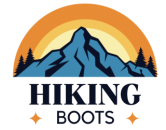
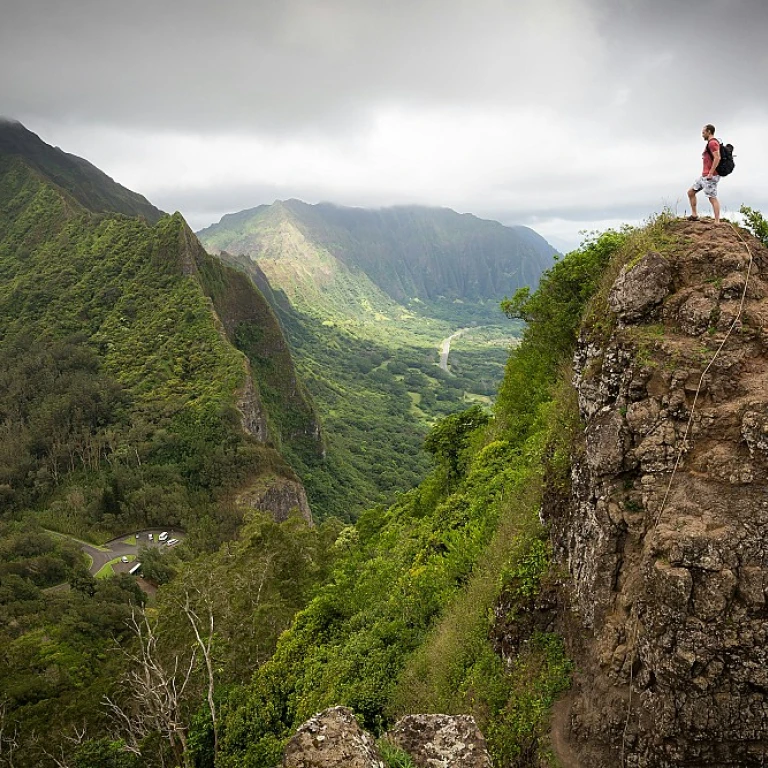
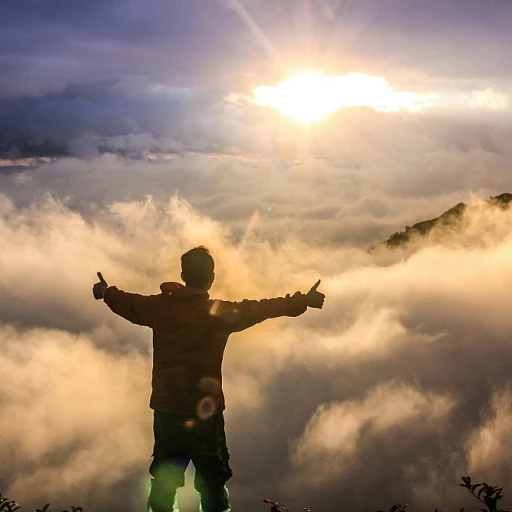
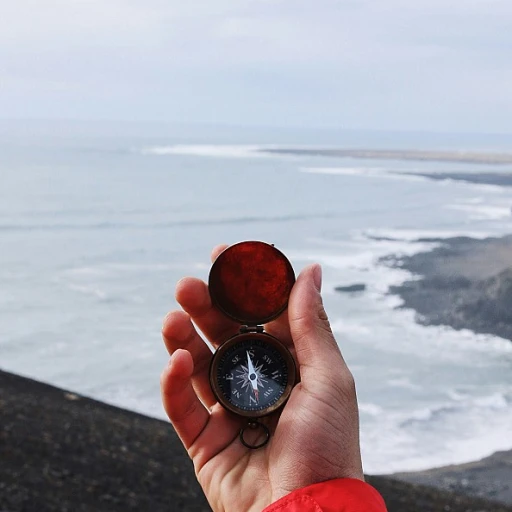
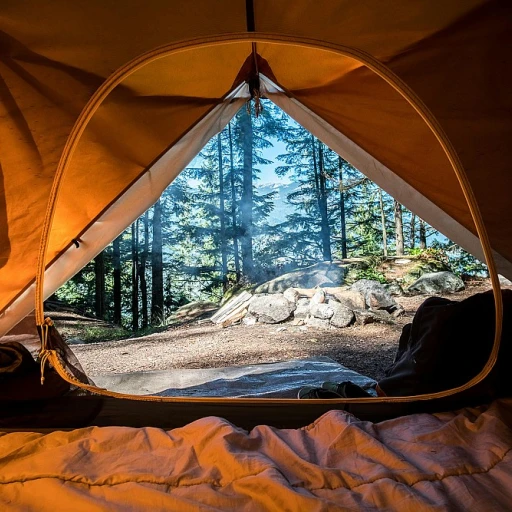
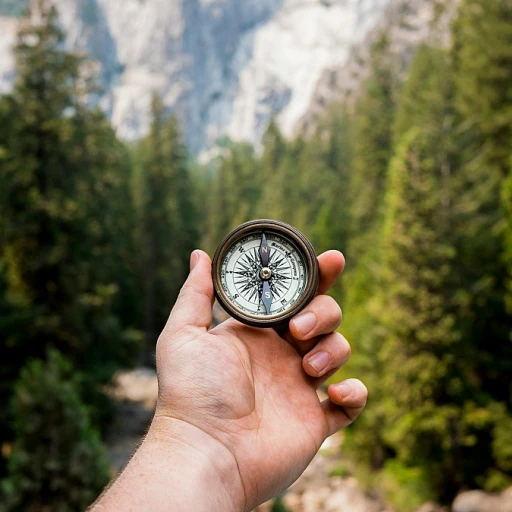
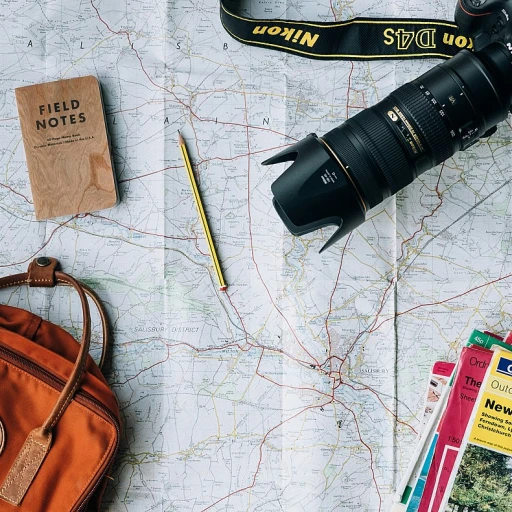
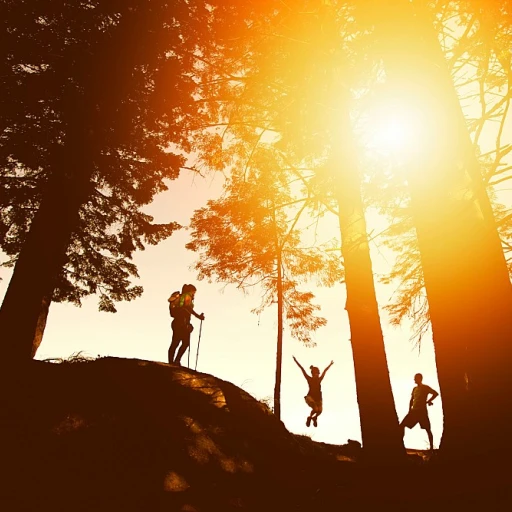
-large-teaser.webp)
